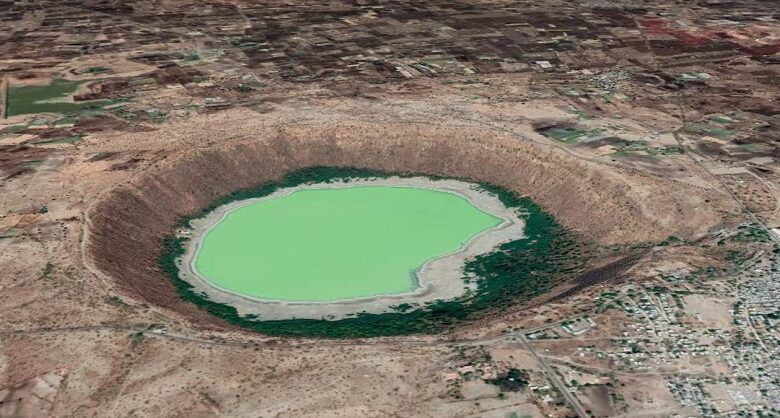Nasa’s Landsat 8 Satellite Captures Stunning Image of Luna Impact Crater in Gujarat

Nasa’s Landsat 8 satellite has recently beamed back a striking image showcasing a massive crater nestled within the Banni Plains grassland of Gujarat, India. This imposing crater, known as the Luna impact crater, is the visible aftermath of a meteorite collision that left an indelible mark on the landscape.
For years, scientists in India had harbored suspicions regarding the origins of this crater, speculating that it might have been formed by an extraterrestrial object. However, it wasn’t until February of this year that new analysis finally confirmed the meteorite impact, unveiling distinctive signatures characteristic of such an event.
Captured by the Operational Land Imager (OLI) aboard the Landsat 8 satellite on February 24, 2024, the image offers a detailed glimpse of the Luna crater. Spanning approximately 1.8 kilometers in diameter, with its outer rim towering approximately 20 feet above the crater floor, the Luna crater stands as a prominent feature within the landscape, leaving an unmistakable impression when viewed from space.
Located within the Banni Plains of Gujarat, adjacent to the expansive Great Rann of Kutch—a sprawling salt desert to the north—the Luna crater assumes significance within this dynamic environment. Its presence becomes particularly conspicuous during periods of low water levels, highlighting the crater’s unique geological attributes.
Taking advantage of a dry period in May 2022, researchers conducted sampling expeditions within the Luna crater, uncovering a trove of rare minerals and heightened concentrations of iridium—an element indicative of the intense heat and pressure generated by a meteorite impact.
Radiocarbon dating of plant remnants embedded within the silt layer places the occurrence of the impact approximately 6,900 years ago. While Luna shares proximity with remnants of ancient Harappan settlements, the precise correlation between the impact event and human presence remains a subject of intrigue, adding layers of historical and archaeological significance to the crater.
Nasa underscores the importance of Luna as an earthly phenomenon, noting that confirmed impact craters on Earth are relatively rare, with fewer than 200 structures documented in the Earth Impact Database. This scarcity is attributed, in part, to the tendency of meteorites to splash down into water bodies upon entering Earth’s atmosphere, thereby limiting the formation of impact craters on land.
The discovery of Luna serves as a testament to the enduring allure of space exploration and the profound insights it offers into Earth’s geological history. As humanity continues to probe the mysteries of the cosmos, landmarks like Luna stand as poignant reminders of the dynamic interplay between celestial forces and terrestrial landscapes.






